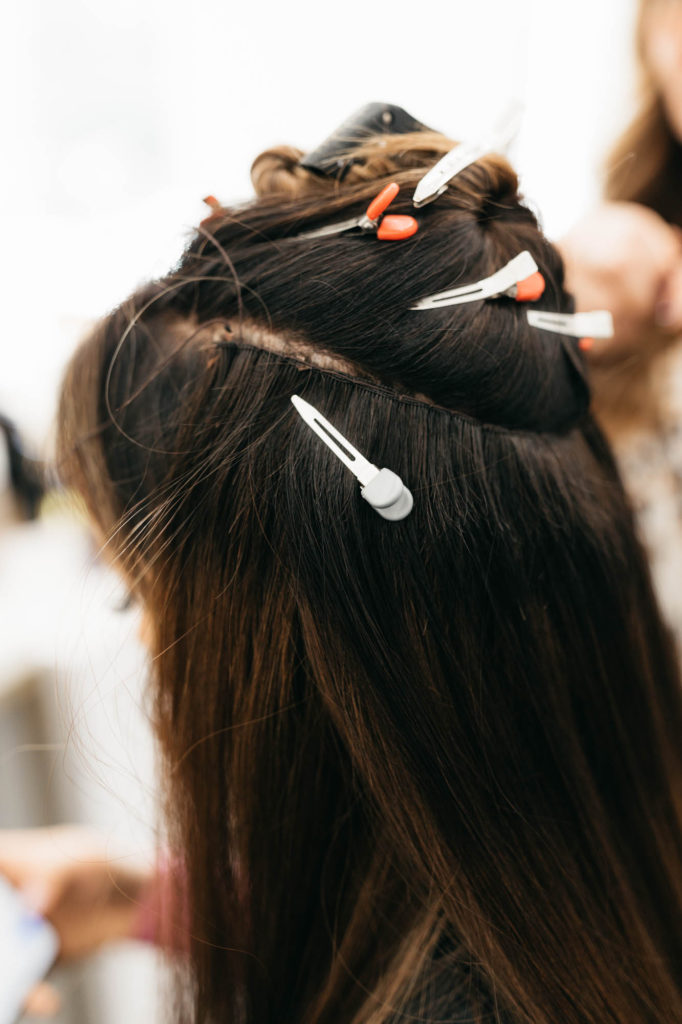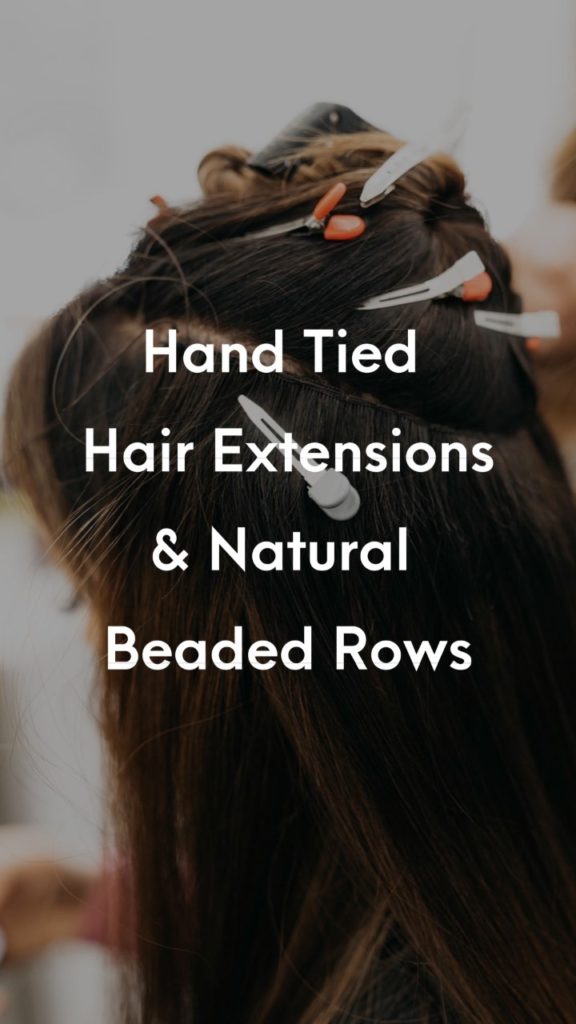At Hair Extension Magazine, we are committed to keeping the industry informed with the latest, greatest, and safest information whether you’re a hairdresser or hair wearer. We interviewed Hair Extension Specialists/Experts, Dermatologists, and Trichologists trained in the diagnosis and treatment of hair loss including hair breakage, alopecia, and scalp conditions in order to gain an understanding of the long term effects from wearing tension application hair extension systems such as Natural Beaded Row and Habit Hand Tied Hair Extensions.

Who is this method for?
Most Clients looking for hair extensions have thin or fine hair. According to Bobbi Russell, Clinical Tricologist, Hand Tied methods utilizing tension points, such as Habit Hair and NBR are only suitable for women with thick or coarse hairs embedded in a deep Follicular Funnel. These are not “one size fits all” methods. Bobbi Russell says “It’s not a question of if these methods lead to hair loss but a matter of when. It can take 3 months to 2 years as each client scalp is different.” The truth is that as we age our hair follicle recedes and become shallower causing our hair to become thin and fine. The last thing clients with thin fine hair want or need is for the thinning to accelerate.
Repeated use of this method will leave fewer variations for placement because when clients start losing hair there will be fewer placement variations which will force the placement application to be applied in the same area which will accelerate the hair loss. Eventually, the hair loss will become permanent as the follicle scars.
How This Method is Applied
There are several methods taught which all incorporate the use of beads and thread in order to create a base for the extension weft. Although some of these methods are better than others, they are definitely not safe to use and apply to people with thin, fine hair. The worst of the methods are those that use a horseshoe pattern starting with a high point and ending at a low point. According to Paul Reynolds, CEO and president of easihair pro and Hair Extension and Hair Replacement expert, “There is a lot of irresponsible hairdressing being driven by social media. These hairdressers are offering overpriced educations which do not address any of the risks associated with tension point systems. Most of these companies cannot and do not supply the product used for the application and have no control over the weights and density of products used post education. If you ask me this is a prime example of sensationalism trumping sensibility. At easihair pro, all of our education is centered around how to avoid over direction and tension points as it is a direct cause of hair loss from hair extensions.”
Education
The input received from attendees of these education courses is that they focus on mastering the application as the application is difficult to learn. At HEM we’ve heard that their classes are more inspiration than education. Education for hair addition, when done correctly, incorporates so much more than application, removal, and reapplication. According to Bobbi Russell, “determining whether the candidate is or isn’t a candidate for hair extensions and which type of hair extension is appropriate trumps everything.”
In Summary
These methods are NOT novel or innovative even though experts agree it looks and feels natural. They have been around since the beginning of hair replacement and well before hair extensions. In our opinion, social media has unfortunately played a significant role in the resurgence of these methods. It appears as if these hand tied education companies are teaching what many in the industry refer to outdated and damaging. To industry experts interviewed it seems as if these companies are about driving dollars versus Protective Styling and Protective Hairdressing which is where Hairdressers using hair additions and hair extensions focus on the protection of the clients, scalp, and hair to prevent tangling, shedding and breakage. So I ask you, is ignorance really bliss or will it find you spending money to accelerate your hair loss, the very thing you’re trying to solve?
Pin it:
